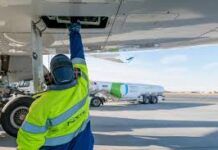Ash from volcanic activity can be a real hazard aloft — over the last 20 years, more than 200 aircraft have reported encounters with ash, and seven lost engine power. Now a new method of sonic detection may help to predict where the ash will occur, so airplanes can have advance warning to avoid the area. Milton Garces of the University of Hawaii has developed a prototype system known as ASHE (Acoustical Surveillance for Hazardous Eruptions). In January, his team deployed the system in Ecuador, and it detected distinctly different infrasound signals between ash-rich eruptions that occurred in July and August and an eruption in May that injected very little ash into the atmosphere. According to Garces, the results suggest that infrasonic monitoring can provide valuable information that may improve future early-warning systems for aviation safety. Just this week, airports in Italy were closed due to clouds of ash from Mount Etna for four nights.

































